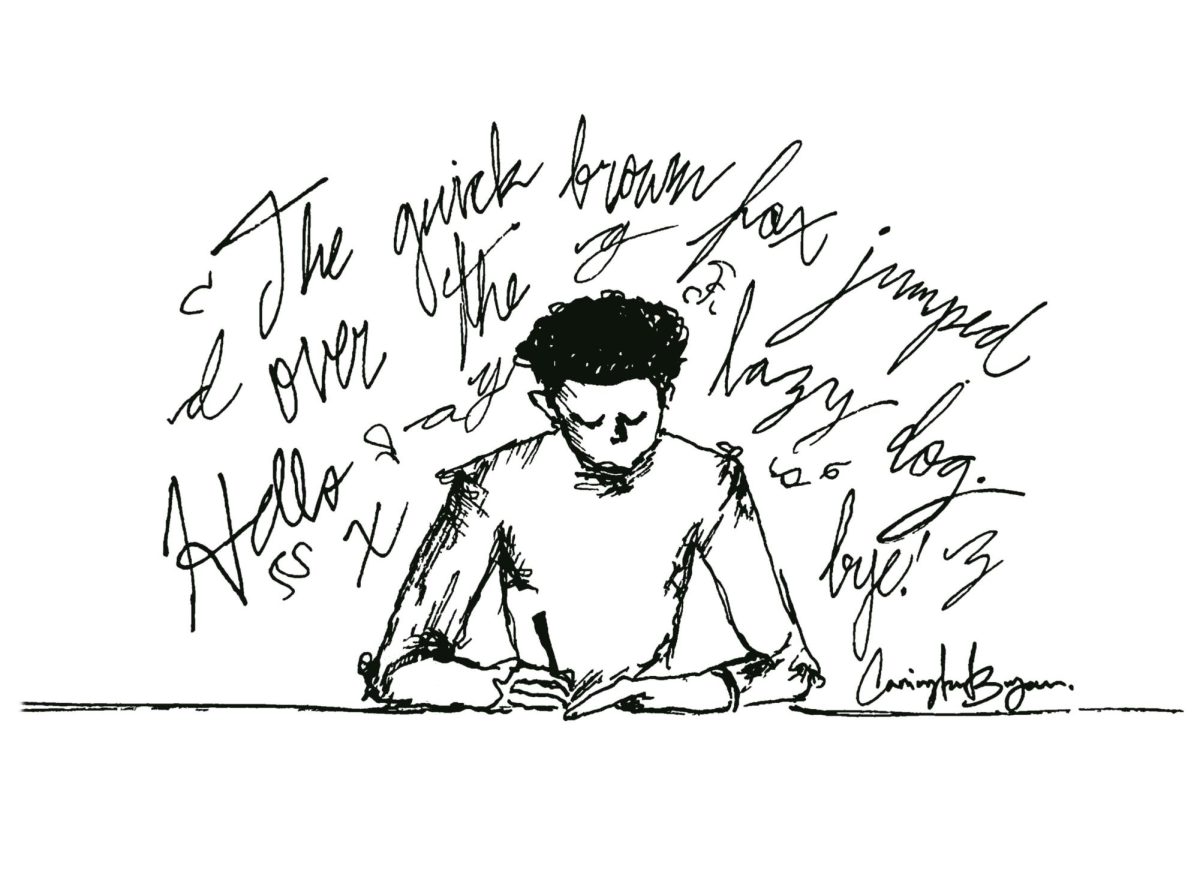It’s your eighth birthday. Your grandma just handed you a pink card adorned with watercolor flowers. You open the card to find some inspirational words of love and care. Below that, a scramble of curves and dips in black ink. You can’t understand any of it. You casually ignore the $10 cash sitting inside the card and whisper to your mom sitting beside you, “What does it say?”
Writing in cursive used to be the standard. Everyone knew how to write in cursive. Either your parents taught it to you or it was implemented in your school’s curriculum. Now that technology has advanced drastically, even in the last 20 years, fewer and fewer people know how to write or even read cursive. We are losing a skill that was commonly appreciated. We are missing the intimate way that a writer connects with a reader. Taking the time to sculpt pretty loopy letters can mean a lot to someone in a birthday card, a love letter or just a sweet note. We need to bring cursive handwriting back.
It was my fifth grade teacher, Mrs. Sienkiewicz, who took it upon herself to teach her students some basic cursive handwriting. I remember straining over my desk, pencil squeezed so tightly I thought I might snap it, struggling to flow my letters together. We did this for a few classes if we finished some assignments early or we had nothing else to work on. My cursive was horrid, but I was just starting out, and I knew it was going to take some practice. So I did what most of my peers did, and I avoided cursive for the foreseeable future.
When the COVID-19 pandemic hit in the spring of 2020, I was preparing to graduate high school. I was a typical quaran-teen, bored out of my mind. Many people occupied themselves with new hobbies, whether it was at-home workouts, intricate crochet or maybe even a backyard garden. I needed something too, something to take my mind off of all the crazy things that were happening in the world. I started practicing writing in cursive.
I saw it as a challenge. I knew my cursive was bad, and I wanted to see how pretty I could make it. I found an old notebook in my desk and began writing each letter of the alphabet about 20 times, repeating uppercase and lowercase. I used different pens and pencils, taking the time to figure out the right pressure, the right angle of my hand to see what flowed easiest and looked the best. I saw it as something I knew I could only get better at with time and effort.
I would spend a good hour every couple of days repeating words and letters. Then I switched to sentences like, “The quick brown fox jumped over the lazy dog,” so I could practice each letter in a sentence. Then I started writing song lyrics or Shakespeare. It became almost mindless. I could translate the words much quicker and easier into cursive. Seasons passed and as I flipped through my pages of writing, I saw my improvement.
I feel more connected to my writing now. It flows out of me in a way that feels fluid and raw. Whether it’s a to-do list, or I’m taking notes in class, I keep practicing. I also love writing in cursive to people in a card or letter. Taking the time to make something memorable for someone feels so special inside.
Cursive handwriting also allows us to connect with the past — if you are trying to decipher a copy of a U.S. census because you’re trying to find your great-grandparents’ birthplaces, most of those documents are going to be in cursive. There’s so many practical ways that people will need the skill of at least reading cursive to learn about themselves and the world around them.
As a writer, I develop my own voice with it, my own style. It feels like my writing is more mature — like the words have their own authority when written in cursive. They feel important and professional. It’s faster too. Yet also soothing. Therapeutic. Like a stress reliever.
I understand why cursive handwriting might not be for everyone. It really takes time and effort to be able to read cursive correctly the first time when looking at it, especially if the writer writes too small or too close together. There are also often slight differences in certain letters, such as r’s or s’s. Only a handful of schools teach cursive nowadays, and I really wish my educators took more time with it. It’s a skill that can be incredibly beneficial if you take the time to dedicate yourself. It’s a craft. It’s a dying art form.
There is something special about handwriting in cursive that I am so fascinated by. It’s the smile you put on someone’s face when you write them a thank-you card for a holiday gift. Or that love letter you want to write to your significant other for an anniversary. It means you are taking the time to think about that person or topic with extra special time, dedication and heart. When you know your writer has taken the time to sculpt each letter with meaning, it gives you a fuzzy feeling inside.
Abby Dobry writes about the arts. Write to her at [email protected]




